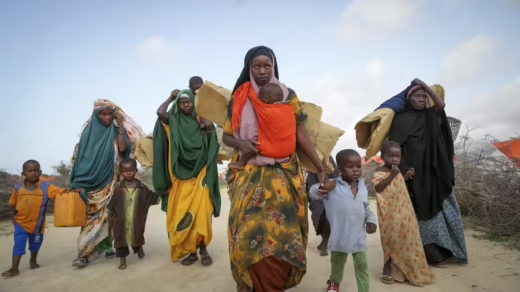
Ethiopia has recently been going through landslides that have been triggered not only by climate change but also by rapid development that the Ethiopian government has not been taking necessary precautions towards. Ethiopia is a nation that is already at a high risk for damage from climate change however with the addition of stressors such as inadequate infrastructure the country’s vulnerability towards climate change keeps rising according to a study by the World Bank.
The Horn of Africa is a region with an extremely complex climate which makes it increasingly susceptible to climate change. This can be seen by the large frequency of natural disasters from the droughts in Somalia to the floods in Djibouti according to research done by the World Health Organization (WHO). East Africa has both coastal regions and plateaus. It has both very mountainous and flat areas. This variation in the topography has led to the region becoming increasingly prone to natural disasters according to Hussein Seid who has a PhD in atmospheric science.
Extreme natural disasters have been on the rise in East Africa, claiming thousands of lives and destroying property. A landslide struck on July 22 2024, the Gofa Zone in South Ethiopia. This region of the nation has been the most severely struck by natural disasters such as flooding and heavy rain. According to a report by the WHO, over 250 people have died, however this number is expected to rise as searches are still going on.
There have been calls for aid from both the local and international community to help the Ethiopian people. Over 15,000 people have been affected by the landslide and many individuals are still in urgent need for food, water and shelter. There have been efforts from all over the nations to provide temporary shelter, however the scale of the natural disaster has been overwhelming for local authorities, resulting in the need for international support from global organizations such as the United Nations and Red Cross. Currently the International Federation of the Red Cross and Red Crescent Societies (IFRC) has launched an emergency appeal for 6 million Swiss Francs which could help over 25,000 people according to a press release by the IFRC.
These landslides have acted as a harsh reminder to the Ethiopian government about the vulnerability of communities to natural disasters, especially rural ones. The area that was impacted by the landslide is very hilly and rural which made it even more difficult for people to receive aid. As climate change continues to worsen and natural disasters become more frequent it has never been more important than now for the Ethiopian government to focus on investing in disaster risk reduction strategies. This could be in many different forms from having more accurate and earlier warning systems to promoting sustainable land usage practices to reduce the risk of landslides. Unsustainable land usage such as deforestation or overgrazing can result in soil erosion. Soil erosion is one of the key factors behind landslides due to reduced soil cohesion, increased surface runoff and loss of topsoil according to a study by the International Journal of Agricultural Science and Food Technology. In conclusion, the recent landslides in Ethiopia serve as a reminder of the urgent need to mitigate the impact of natural disasters.
Written by Dorine Benedict


